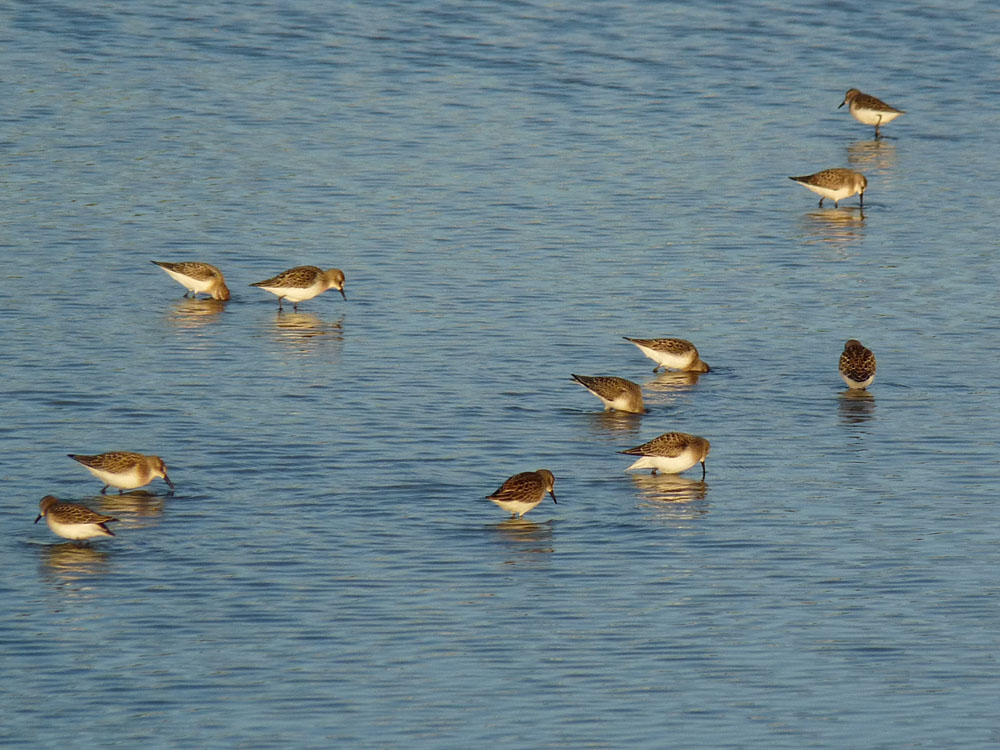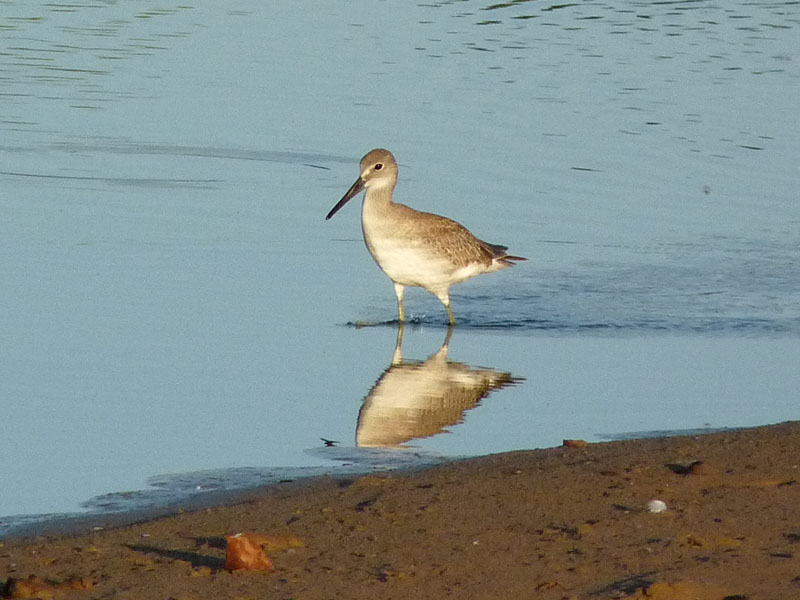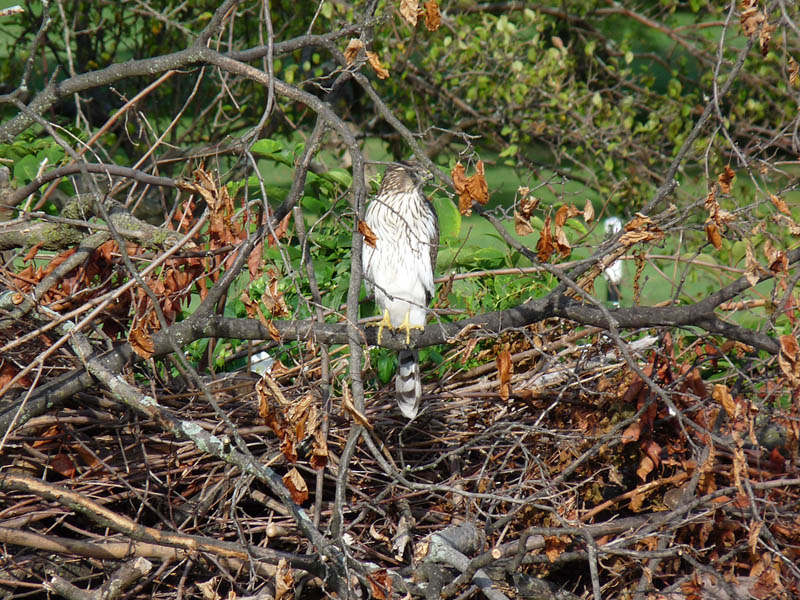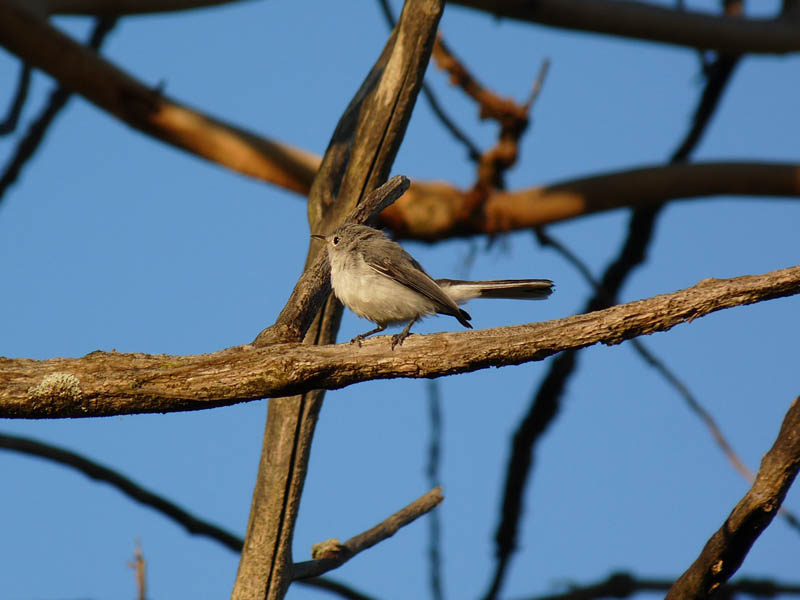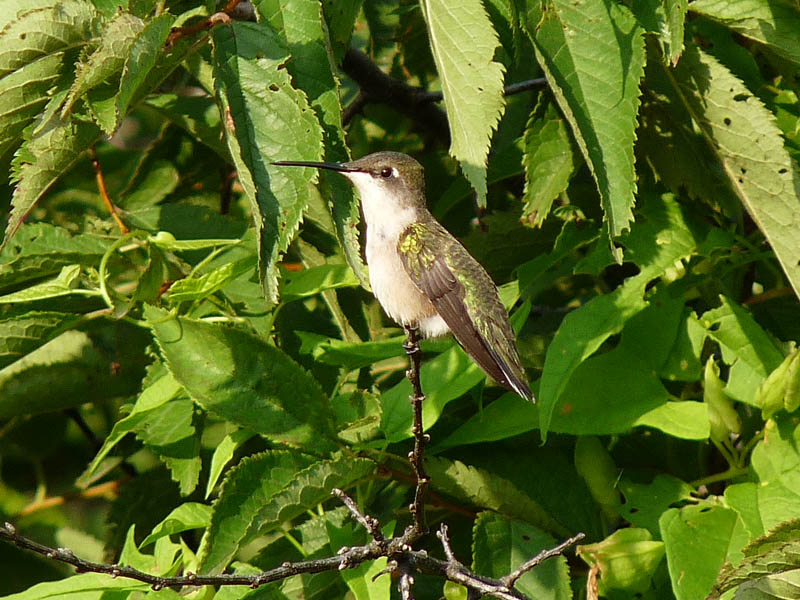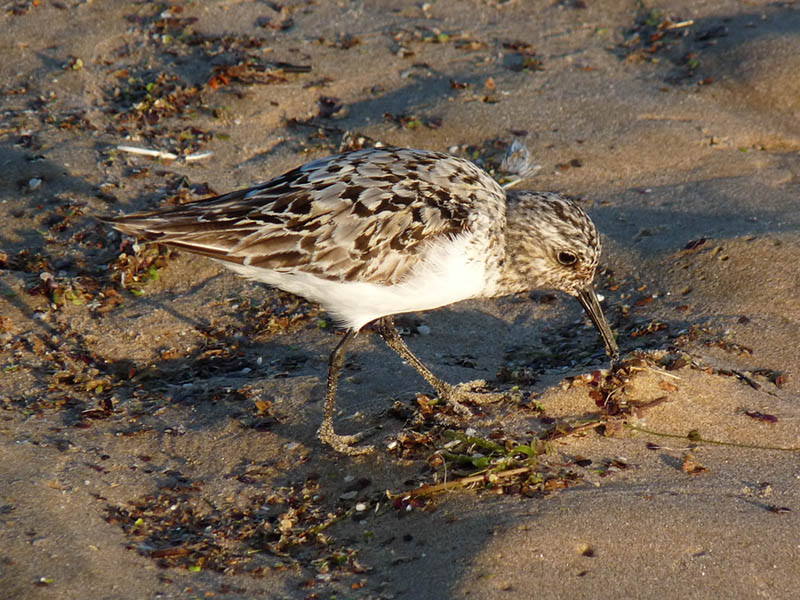
Sanderling (click to see the larger version)
Shorebirds have been moving south at Montrose since late June. This is typical. The first birds are invariably adult Least Sandpipers (adult shorebirds precede their offspring). It’s hard to believe they have enough time to breed before starting migration again. The earliest southbound migrants almost overlap in time with the last northbound spring migrants! Montrose Beach serves as a convenient stopover for feeding and resting. The public part of the beach is often flooded in summer and migrant shorebirds like to break there and fuel up before continuing their journey. Some of the more unusual birds we’ve seen this summer include Whimbrel, Red Knot, Western Sandpiper, and White-rumped Sandpiper. Montrose doesn’t get huge numbers of shorebirds but the ones we do get we usually see well.
Monty and Rose
Also on the shorebird front, our celebrity Piping Plovers Monty and Rose returned in 2020 and nested again. This year they set up in the Dunes among the thick beach grass, which made monitoring challenging. They successfully raised 3 young, and unlike last year’s brood, fish and wildlife officials banded all 3. The young were also given names — Hazel, Esperanza, and Nish. The family departed by mid-August.
For more information about shorebirds at Montrose, see the Shorebirds section on the What to See page.

